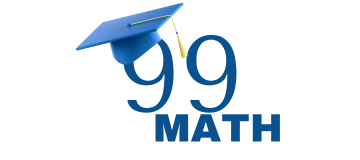Paying for College Education: A Student’s Guide to Financial Aid and Beyond

The financial responsibility of attending higher education is one of the biggest challenges students face today. With rising tuition costs and other fees, it can be difficult to cover the expenses required for a degree. To ease this burden, there are various financial aid options available, ranging from grants and scholarships to private loans. Understanding these options is essential in order to make the right decision about how to fund a college education. While many students will rely on different types of financial aid to cover their tuition and living expenses, it’s crucial to be mindful of the repayment process down the line.
Here’s what you need to know about different funding options to make informed choices that will help you succeed during and after your college years:
Understanding Financial Aid: The Basics
Financial aid refers to the resources available to help students pay for their studies. There are three main types: grants, scholarships, and loans. Grants and scholarships are the most desirable because they don’t require repayment. Grants are typically awarded based on financial need, while scholarships are awarded for achievements, such as academic performance or special talents. Loans, however, must be repaid with interest after graduation. Students must complete the Free Application for Federal Student Aid (FAFSA) in order to apply for financial assistance. This document establishes a person’s eligibility for state and federal funding, opening doors to work-study, loans, and grants.
Private Loans and Alternative Options for Financing Your Education
Private loans offer a solution for students who need additional funds beyond what federal aid can cover. These loans are provided by banks or private lenders, and they often come with different interest rates and repayment terms than federal options. For example, a student loan can help you manage tuition and other expenses. When considering private loans, it’s essential to understand the interest rates, repayment schedules, and flexibility of each loan. Some private lenders offer more competitive rates or flexible repayment plans. Students should carefully compare options to ensure the best possible terms for their specific financial situation and future repayment capacity.
Federal vs. Private Financial Aid: What’s the Difference?
Federal and private financial aid serve the same purpose but have key differences. Federal aid includes grants, loans, and work-study programs funded by the government, often with lower interest rates and more favorable repayment terms. Federal loans typically offer income-driven repayment plans and deferment options in case of financial hardship. Private financial aid, on the other hand, comes from banks or other lenders. These loans may offer more flexible borrowing limits and terms, but often come with higher interest rates. Also, private loans may require a co-signer or strong credit history. It’s essential to weigh both options carefully before deciding.
Scholarships: Free Money for College
Scholarships are one of the best ways to fund an education because they don’t require repayment. Scholarships can be merit-based or need-based, and students may also find awards tied to their intended major or extracurricular activities. Merit-based scholarships are awarded for academic achievement or outstanding talent in areas like sports, arts, or leadership. Need-based scholarships focus on a student’s financial situation. Applying for scholarships requires time and effort, but the reward is worth it. Many websites list available scholarships, while local organizations or schools may offer additional opportunities. These funds can significantly reduce the amount of debt a student needs to incur.
Grants: Government-Funded Support
Grants provide “free money” for students and are often the most desirable form of financial aid. Unlike loans, grants do not need to be repaid. Federal grants are the most common way for students to get financial aid. In addition to federal grants, many states offer grants to residents attending in-state schools. State grants often have specific eligibility requirements based on residency or the type of school. To apply for grants, students must fill out the FAFSA. Many colleges also offer institutional grants, which are based on a student’s financial need and academic performance. Grants are essential for reducing the need to borrow.
Work-Study Programs: Earning While Learning
Work-study programs allow students to earn money while attending school, helping them manage expenses. These programs provide part-time jobs, typically on or near campus, that work with a student’s schedule. Students participating in work-study can take on jobs such as research assistants, library aides, or office assistants. The program is beneficial because it doesn’t add to the student’s debt load, as the earnings are used for living expenses and tuition fees. To be eligible for work-study, students must demonstrate financial need, which is assessed through the FAFSA application. While it won’t cover all expenses, work-study can significantly reduce the need for borrowing.
Loan Repayment: What to Expect After Graduation
After graduation, it’s time to start repaying loans. Federal loans for students offer various repayment options, including Income-Driven Repayment Plans (IDR), which adjust monthly payments based on your income. These plans can make loan repayment more manageable, especially if you’re starting out in a lower-paying job. Private loans may not offer these flexible options, so it’s important to carefully read the loan agreement and understand repayment terms. Loan consolidation is another option that can simplify payments by combining multiple loans into one. Graduates should stay on top of payments to avoid penalties and default, which can have serious long-term financial consequences.
The Impact of Interest Rates on College Debt
Interest rates can significantly affect the total amount you pay over the life of your loan. Federal loans typically have fixed interest rates, which means your rate will stay the same throughout the loan term. However, private loans may have either fixed or variable interest rates, and they can change over time, making them potentially more expensive in the long run. Interest on loans adds up over time, so paying off loans early can save money. Additionally, borrowers can often lower their interest rates by making timely payments, which helps reduce the overall cost of their debt. Understanding how interest rates work is crucial for managing your loan repayments efficiently.
Paying for a college education requires careful planning, understanding of available financial resources, and smart decision-making. From federal and private loans to scholarships, grants, and work-study programs, there are many ways to fund your studies. Each option has its own pros and cons, so it’s important to research and choose what works best for your financial situation. By setting a budget, being mindful of loan repayment terms, and avoiding common financial pitfalls, students can reduce their debt burden and focus on their education. Taking control of your finances now can lead to a successful and debt-free future.




